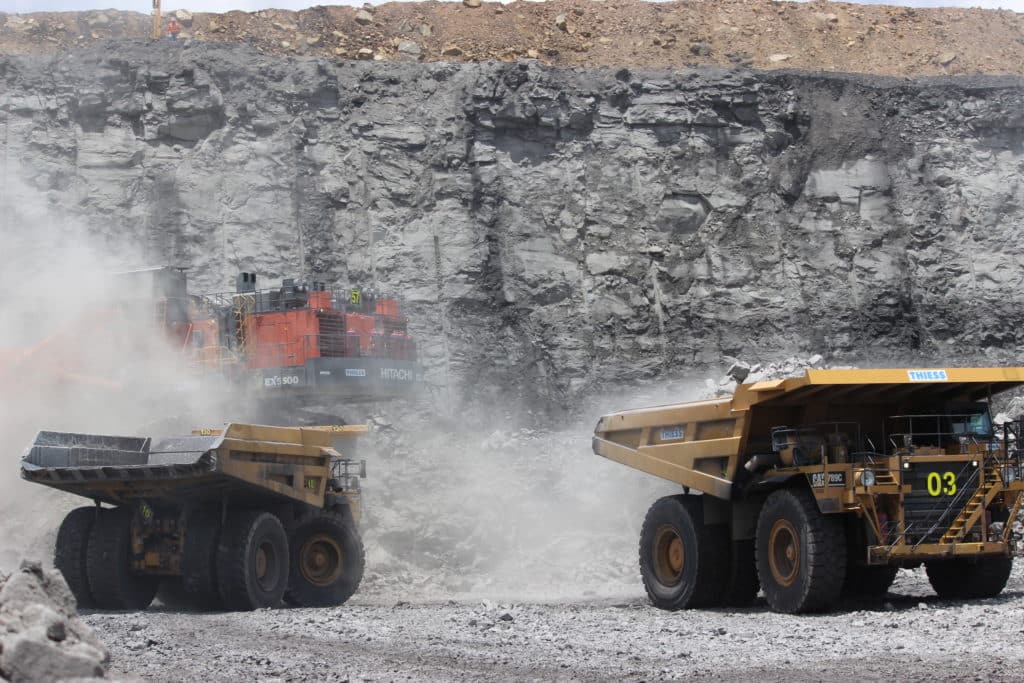The hierarchy of controls is a widely accepted framework for managing and controlling workplace hazards.
It prioritizes various control measures in a specific order to minimize or eliminate hazards. Here’s a breakdown of the hierarchy of controls and examples of dust controls for each level:
Are environmental regulations, health and safety concerns or potential profit loss a concern right now?
Elimination:
- Remove the hazard, or the need to perform the hazardous activity.
- Examples of dust controls:
- Adopt production processes that generate less dust (e.g., wet methods instead of dry methods).
- Treat dust at its point of generation using dust suppression techniques (e.g., water sprays, chemical additives, local exhaust ventilation).
- Treat dust on its transmission path using dust suppression techniques.
Substitution:
- Substitute a safer alternative
- Examples of dust controls:
- Substitute a less hazardous substance (e.g., powders instead of pellets).
- Replace sand with garnet as an abrasive blasting agent.
Separation/Isolation:
- Isolate or separate people from the hazard through barriers, distance, or time.
- Examples of dust controls:
- Place a physical barrier between the dust-generating task and the worker (e.g., enclosed cabins).
- Use remotely operated machinery to keep workers away from dust-generating areas.
Engineering Controls:
- Redesign or modify tools, equipment, or processes to control the hazard.
- Examples of dust controls:
- Choose appropriate equipment and maintain it regularly.
- Suppress dust using water sprays, additives, and local exhaust ventilation.
- Enclose equipment and machinery.
- Use ventilation and filtration systems.
Administrative Controls:
- Use training, rules, and procedures to reduce the risk of the hazard.
- Examples of dust controls:
- Ensure regular maintenance and housekeeping.
- Establish exclusion zones to keep personnel away from dust-generating activities.
- Provide training and information to workers on hazards, risks, and controls.
- Limit exposure duration and magnitude.
- Modify work schedules to include rest periods.
- Implement signage for safety.
Personal Protective Equipment (PPE):
- Provide fit-for-purpose protective equipment when other controls are not feasible or sufficient.
- Examples of dust controls:
- Select appropriate respiratory protection (e.g., P1, P2, full face, half face, powered air, purifying).
- Provide training, comfort, and fit testing for respiratory protective equipment.
- Properly maintain and store respiratory protective equipment.
It’s important to note that the hierarchy of controls should be applied sequentially, starting with the most effective control measure (elimination) and progressing downward as needed. In many cases, a combination of control measures may be necessary to adequately manage and reduce dust hazards in the workplace.
Dust suppression is a critical issue in the world of mining and resources.
Learn more about GRT’s industry-leading and IoT-connected SMART Dosing Units, and discover how we’re driving better dust suppression solutions for all!
If you’d like to talk with an expert, simply contact us!
Your feedback is important to us.
If you enjoyed reading this Global Road Technology industry update and found it informative, please let us know by leaving a REVIEW.
References:
https://www.business.qld.gov.au/industries/mining-energy-water/resources/safety-health/mining/hazards/dust/control
